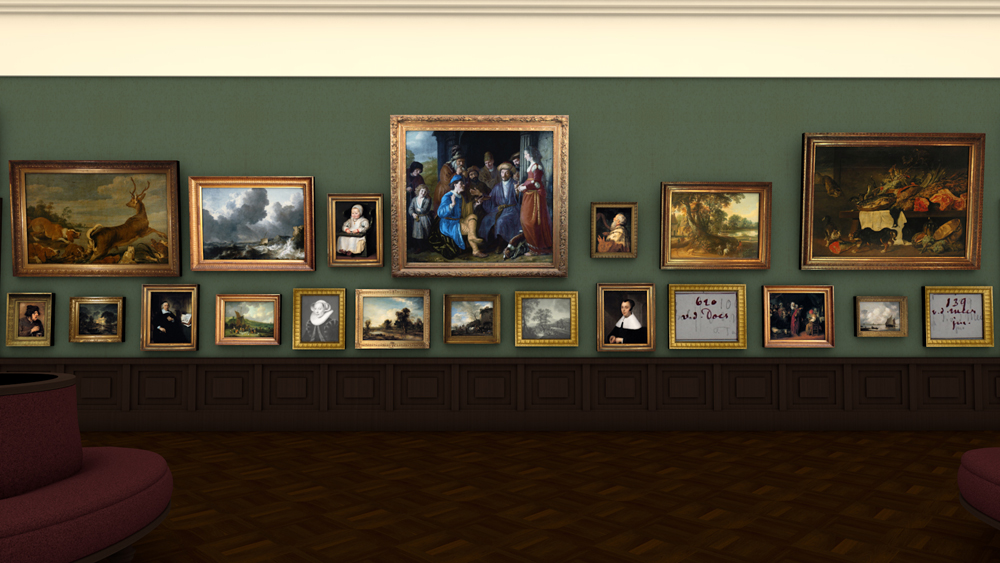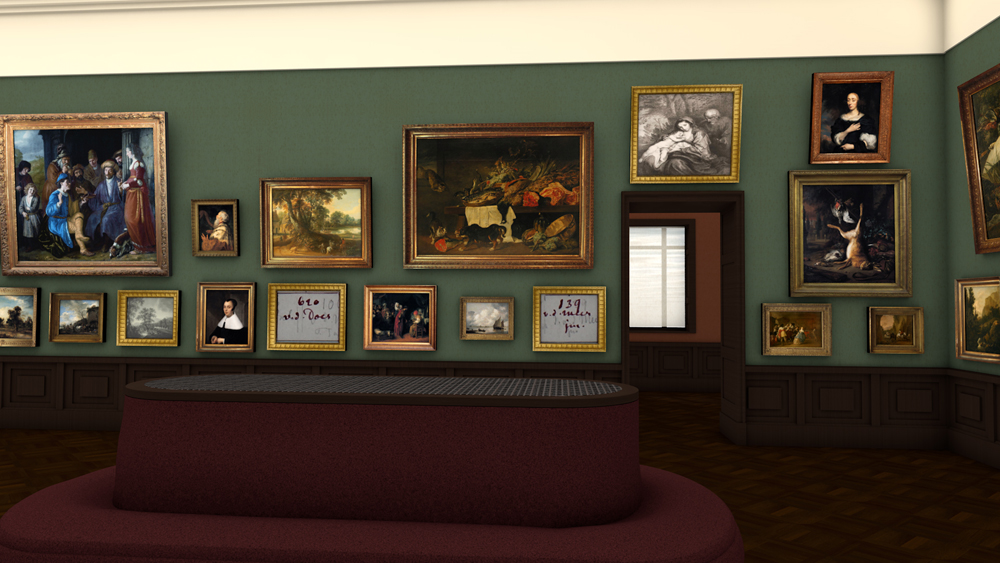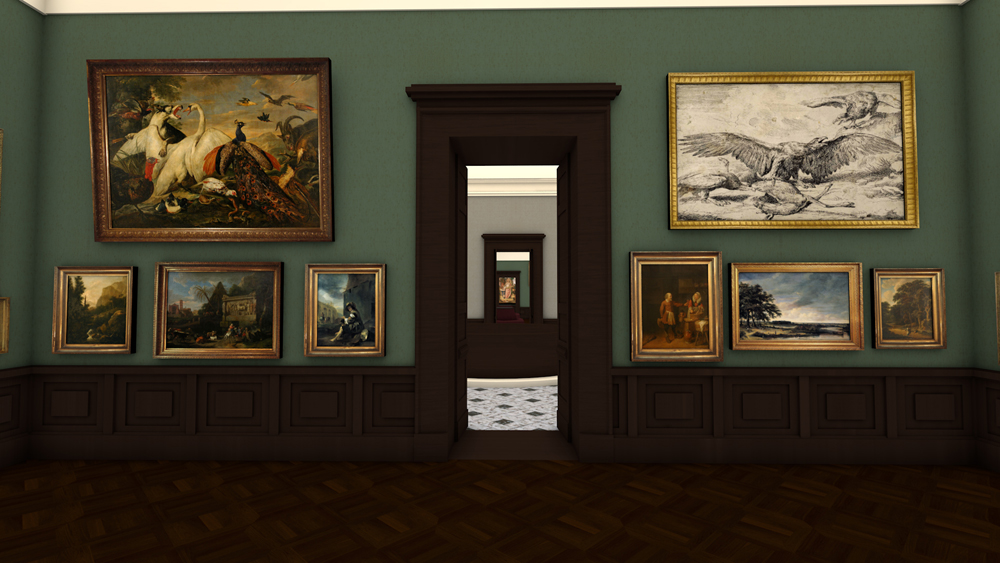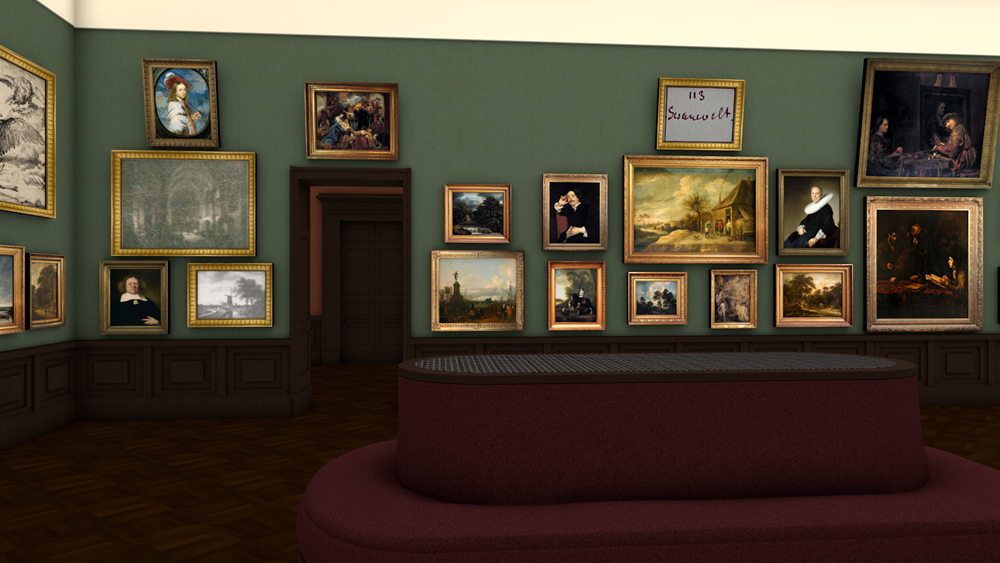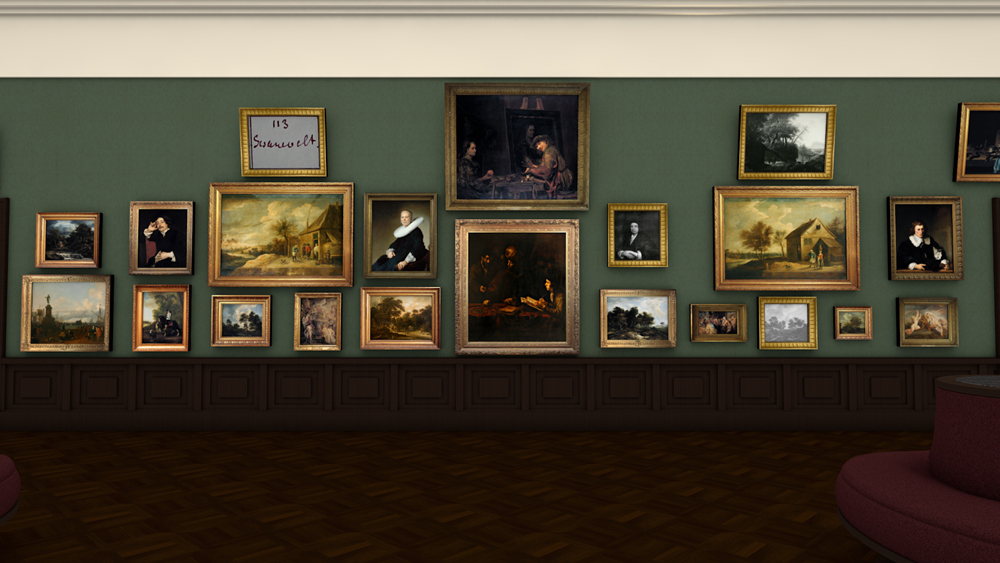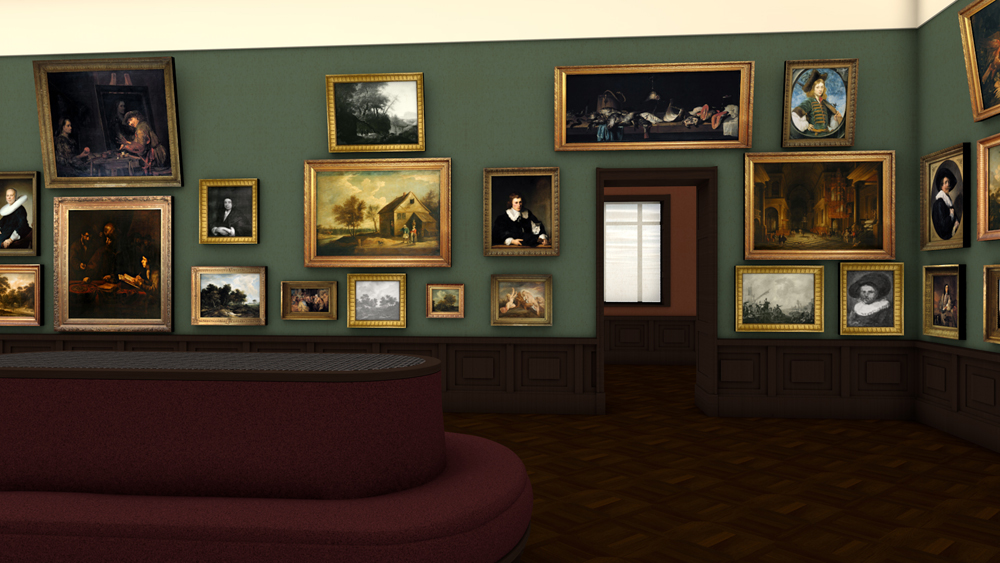1878 Large western skylight room
Rembrandt
and Rubens
The first large skylight room in the museum’s western wing was reserved for Dutch and Flemish Baroque painters. Among these, Rembrandt was particularly cherished. Attributed to him, among other works, was the painting “The Parable of the Workers in the Vineyard”, centrally hung on the south wall. It had only been bought in 1864, and for a handsome sum. Today, the work is considered to be by the circle of the Rembrandt pupil Ferdinand Bol.
Presented above the supposed Rembrandt was Aert de Gelder’s “Selfportrait as Zeuxis”. On the opposite side, Rembrandt’s pupils were well represented as well, with Jan Victors’ “Boaz Assumes the Legacy of Elimelech”. Since the Städel, as a true civic museum, only possessed smaller works by Peter Paul Rubens, the Flemish master appeared to play a subordinate role. However, in 1878 attempts were made to make new acquisitions. Presented closely together on the optimally visible lower register of the south wall, visitors could now see three history paintings that at the time were attributed to the Flemish master. On the opposite side, Rubens’ “King David” and the beloved “Portrait of a Child” had found central positions; by that time, however, the reattribution of the second work to Cornelis de Vos (instead of Rubens) was already being discussed. The overall composition of the walls was characterised by a symmetrical alternation of the secondary genres of landscape and portrait painting. Among these works, prominently displayed on the end wall, were also the portraits of a married couple by Frans Hals, whose qualities as a painter had been rediscovered during the second half of the nineteenth century. In addition, the presence of large format hunting scenes and still lifes by Flemish masters granted the sky light room a princely aura.





